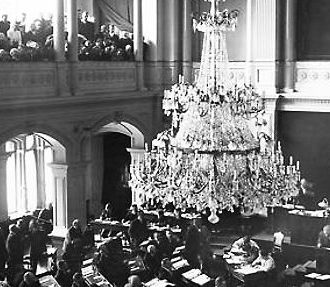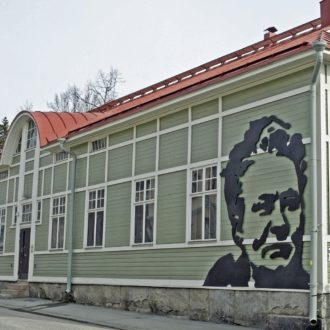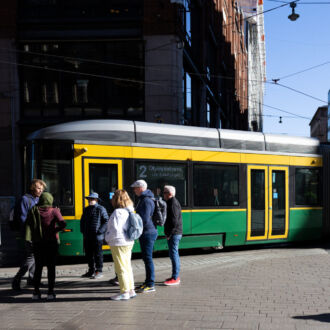Miina Sillanpää (1866–1952) was born Wilhelmiina Riktig, the seventh child of nine in a poor family in Jokioinen, a village in southern Finland, during a period of famine. At the age of 12, she started working in a cotton mill in the nearby town of Forssa, 120 kilometres (75 miles) northwest of Helsinki. She later found employment as a maid in Porvoo, 50 kilometres (30 miles) east of the capital, and subsequently moved to Helsinki to work as a domestic aide.
She spent much of her life engaged in civil activism and social advocacy.
In 1898 she helped found the Servants’ Association, taking over as director in 1901 – a post she would hold for half a century. She was active in the drive for women’s suffrage in the early 1900s, and after women gained the right to vote and to stand for election, in 1906, she was among the first 19 women to be elected to Parliament, in 1907.
Overcoming cultural resistance
Miina Sillanpää: Will, faith, daring
Video: Miina Sillanpää Society and company
During her 38 years as a member of Parliament, Sillanpää worked tirelessly to promote the social issues that she believed in. She continuously supported measures to improve the position of women in society.
From 1926 to 1927 she served as minister of social affairs, becoming Finland’s first female government minister.
In the 1930s, she helped start an organisation of shelters for single women and their children, overcoming longtime cultural resistance to the idea. She was a determined and effective fighter for improvements to the lives of the disadvantaged and the elderly, motivated by her values of fairness and equality.
In 2016, October 1 was declared a recommended flag-raising day in Miina Sillanpää’s honour. In 2023, it became a full-fledged flag-raising day.
By ThisisFINLAND staff, source: Miina Sillanpää Society







